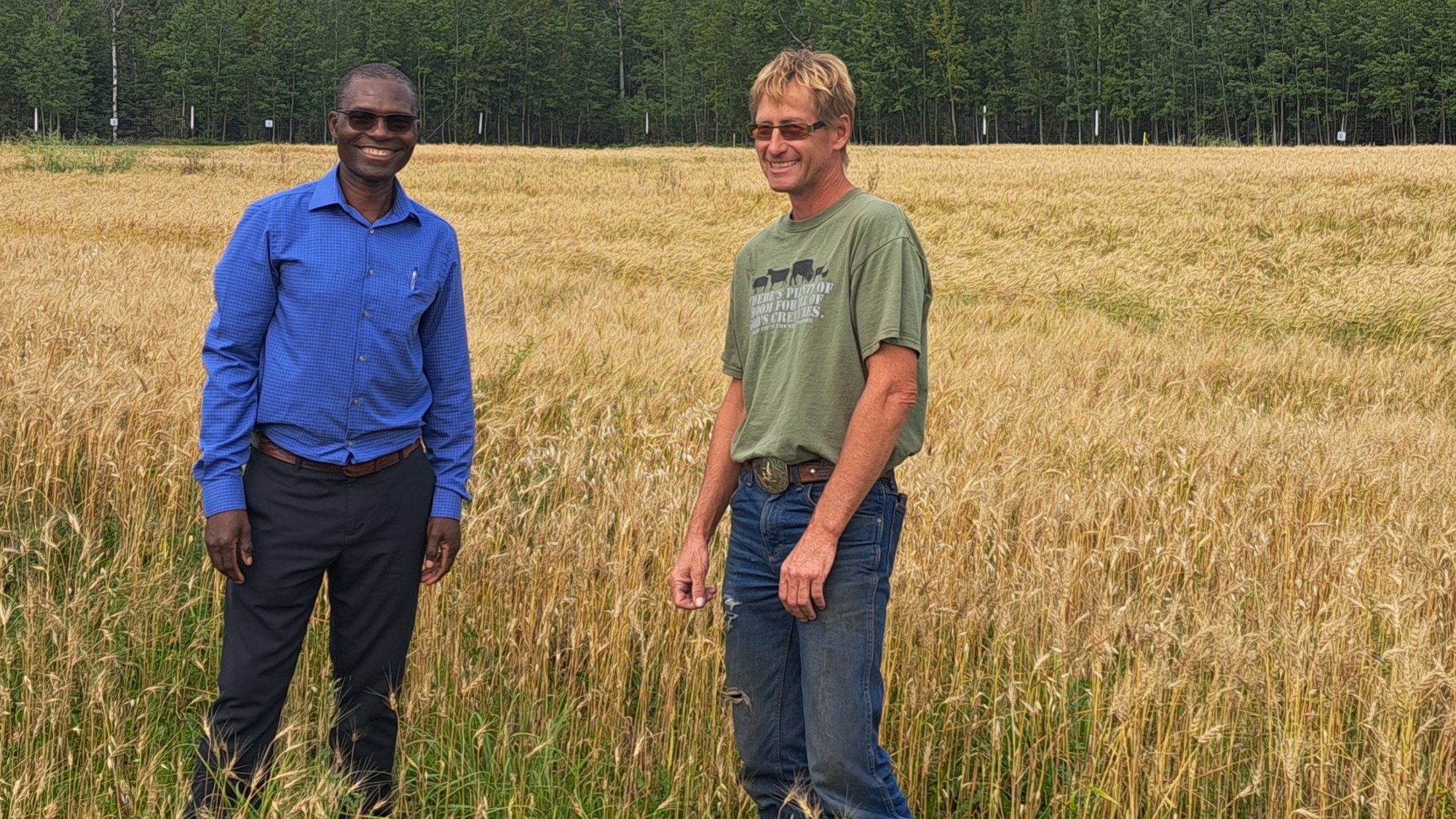Canada’s most important crop-producing areas — the Prairie provinces — have become hotter and drier over the last 120 years, University of Alberta research shows.
A review of various scientific literature looked at the effects of climate change on the cropland of Alberta, Saskatchewan and Manitoba from 1901 to 2021, showing a consistent trend of higher air temperatures in winter and spring, less snowfall and more disruptive weather, such as frequent and intense rainfalls.
The review is among the first to explore the impact of climate change on cropland specifically in the Prairie provinces, and may ultimately help farmers adapt to their local conditions, says Emmanuel Mapfumo, adjunct professor in the Faculty of Agricultural, Life & Environmental Sciences, who led the study, co-authored with U of A researchers David Chanasyk and Dick Puurveen.
“Our report highlights the state of knowledge about the Prairies and where we can go from here,” says Mapfumo, who is also an associate professor at Concordia University of Edmonton. “There’s so much regional variability, it’s important to have data particular to an area to create adaptation strategies that will help protect crops.”
As Canada’s largest and most productive agricultural region, the Prairie provinces, along with parts of Ontario and Quebec, are essential to Canada’s economy, Mapfumo adds. In 2022, crop production accounted for $30.6 billion of Canada’s gross domestic product and employed 118,300 workers.
“It’s vital to find ways to mitigate local climate change, which affects the ability to grow various crops and hence affects crop yields, and has ripple effects such as higher food costs.”
The review looked at historical changes since 1900 to air temperature, precipitation, drought and crop yield, based on articles published in scientific studies and websites, books and government documents.
Several of the source materials reported increases of up to 6 C in average, minimum and maximum daily air temperatures over time in the Prairie regions.
Particularly concerning was a consistent finding across the data that minimum air temperature, or the lowest temperature recorded during the day, increased anywhere from 1 C to 4.5 C.
“That is a significant finding because it means winters are getting less cold,” Mapfumo says. “That can result in mid-season snowmelt, lower snow levels and less moisture in the early spring, which is important for sustaining early-stage crop growth.”
Combined with maximum air temperatures, which also increased, the warmer growing environment makes conditions ripe for higher evaporation rates of moisture from the soil, he adds.
“It means more rain would likely be needed to get enough moisture to keep crops healthy and growing.”
Growing degree days and corn heat units — measures of heat accumulation related to crop maturity — also rose over time, the researchers found.
While those warmer temperatures could allow for northward expansion of crops such as corn, that could be outweighed by drier conditions, an increased likelihood of disease and earlier emergence of pests in other crops such as the wheat midge, Mapfumo says.
“Crop producers could have a longer period of time where they are struggling with these issues.”
The review also revealed a trend toward drier conditions across Canada, including the Prairies. Since 1950, levels of yearly snowfall and snow cover duration in Canada have decreased, and the number of frost-free days has risen since 1900. Levels of off-season precipitation between October and April — which is crucial to keeping soil moist for the growing season — also declined.
“Combined with an overall increase in average temperatures, these factors can make crop production much more challenging and could reduce crop yields,” Mapfumo notes.
The review confirms, on a larger scale, the findings of a 2022 study of data dating back to 1901 from the U of A’s Breton Plots, which had similar findings of climate change on a local level.
Collectively, the findings are the first steps to creating strategies, such as changing or rotating crops, for agricultural industries and farmers to adapt to these drier conditions on a regional level, says Mapfumo.
“We know climate change impacts different regions and communities in different ways, so having more local knowledge will allow for an adaptation strategy that is ideal for each area or region.”
The research also supports Canada’s National Adaptation Strategy, geared to creating safe and secure communities in the face of climate change, he adds.
“To do that requires knowledge of climate change impacts at local and regional levels.”
The review is a “good starting point” to future Prairie-specific crop research, he adds.
”The more data we have, the easier it becomes to develop policy and adaptation strategies for different parts of the Prairies. There’s a lot more work that we can do.”
The study was funded by the Natural Sciences and Engineering Research Council of Canada.
